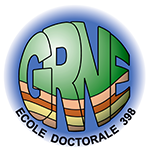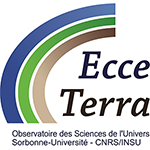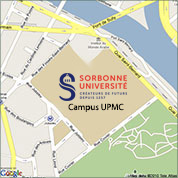Séminaire ISTeP - Fred Mouthereau
(ISTeP)
Structure of orogenic belts controlled by lithosphere age
The structure of a mountain belt reflects the manner in which plate convergence is accommodated in Earth’s lithosphere. However, the extent to which orogenic structure is preconditioned by the thermo-mechanical conditions of the converging plates is debated. Here we re-process and analyse existing data on the amount and style of contractional deformation in 30 orogens worldwide and compare this with the lithospheric strength and age of the colliding plates. We find a correlation between orogenic deformation, and specifically the depth at which the crust decouples from the underlying plate, and the age of the lithospheric plate at the time of collision. Orogens formed from Phanerozoic lithosphere, which has high geothermal gradients and weak mantle, are characterized by several under-thrust faults that form in the mid-to-lower crust and moderate amounts of deformation, at less than 35% crustal strain. In contrast, orogens formed on older lithospheric plates, which have greater strength and higher-viscosity mantle, are characterized by a large detachment fault and large amounts of deformation, at about 70% crustal strain. We conclude that inherited lithospheric strength influences the style and amount of plate-tectonic contraction during mountain building, and thus the stability of continental subduction. Our results emphasize the influence of the deep Earth on the structural style of collisional orogens.
Reference : Mouthereau et al. (in press), Nat. Geosc., doi: 10.1038/ngeo1902
18/10/2013 à 12h30, Salle Fourcade
Egalement dans la rubrique
Chiffres clés (Mars 2025)
L'ISTeP comprend 131 membres dont :
Permanents (66)
- Professeurs : 17 (+2 PAST)
- Maîtres de conférence : 26
- Directeurs de recherche CNRS : 1
- Chargés de recherche CNRS : 1
- ITA : 19
Personnels non permanents (65)
- Collaborateurs bénévoles / émérites : 17
- Chaire de professeur junior : 1
- Enseignants-chercheurs contractuel : 2
- 1 MCF accueil en délégation
- ATER et Post-Docs : 9
- Doctorants : 32
- ITA-BIATSS : 3





